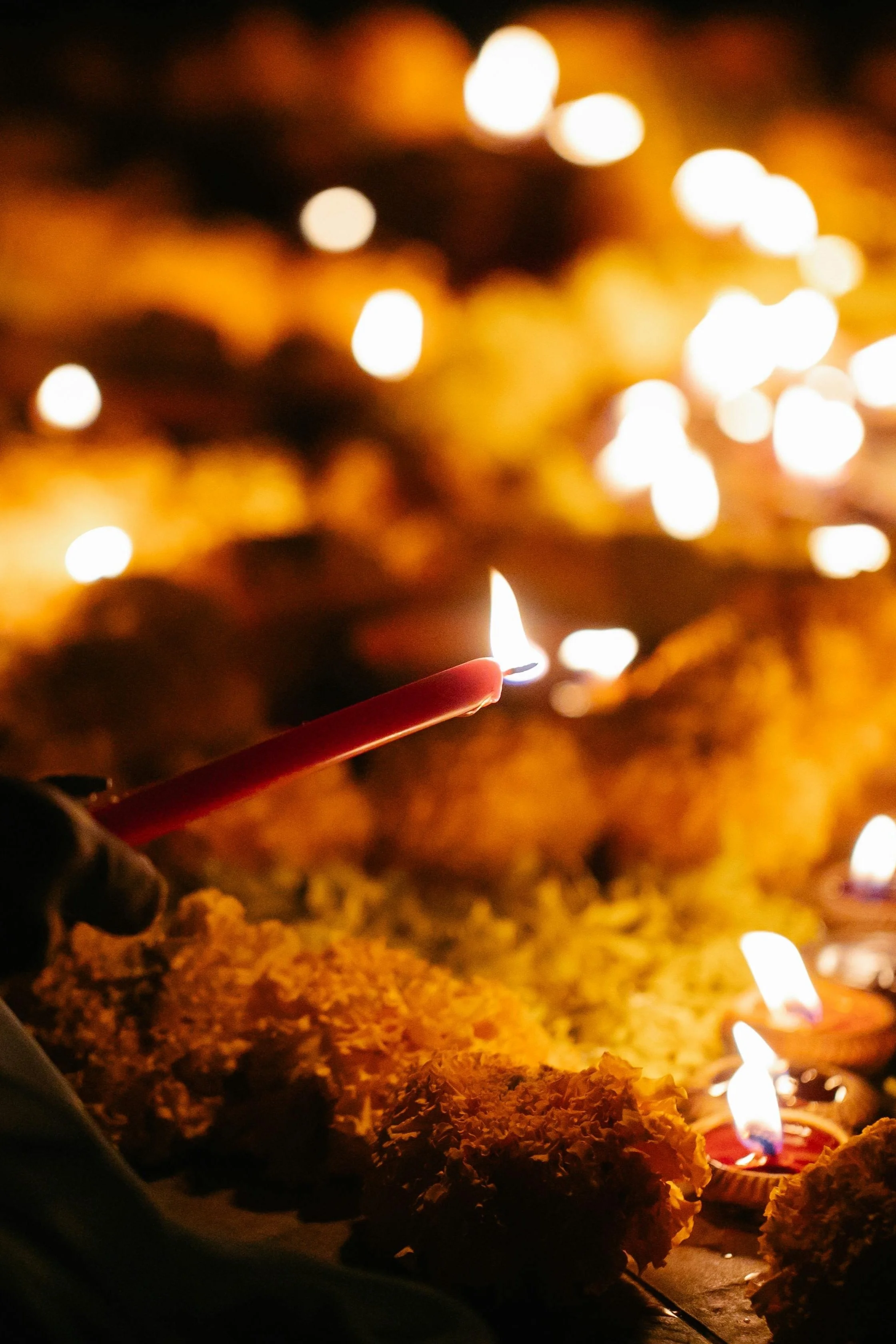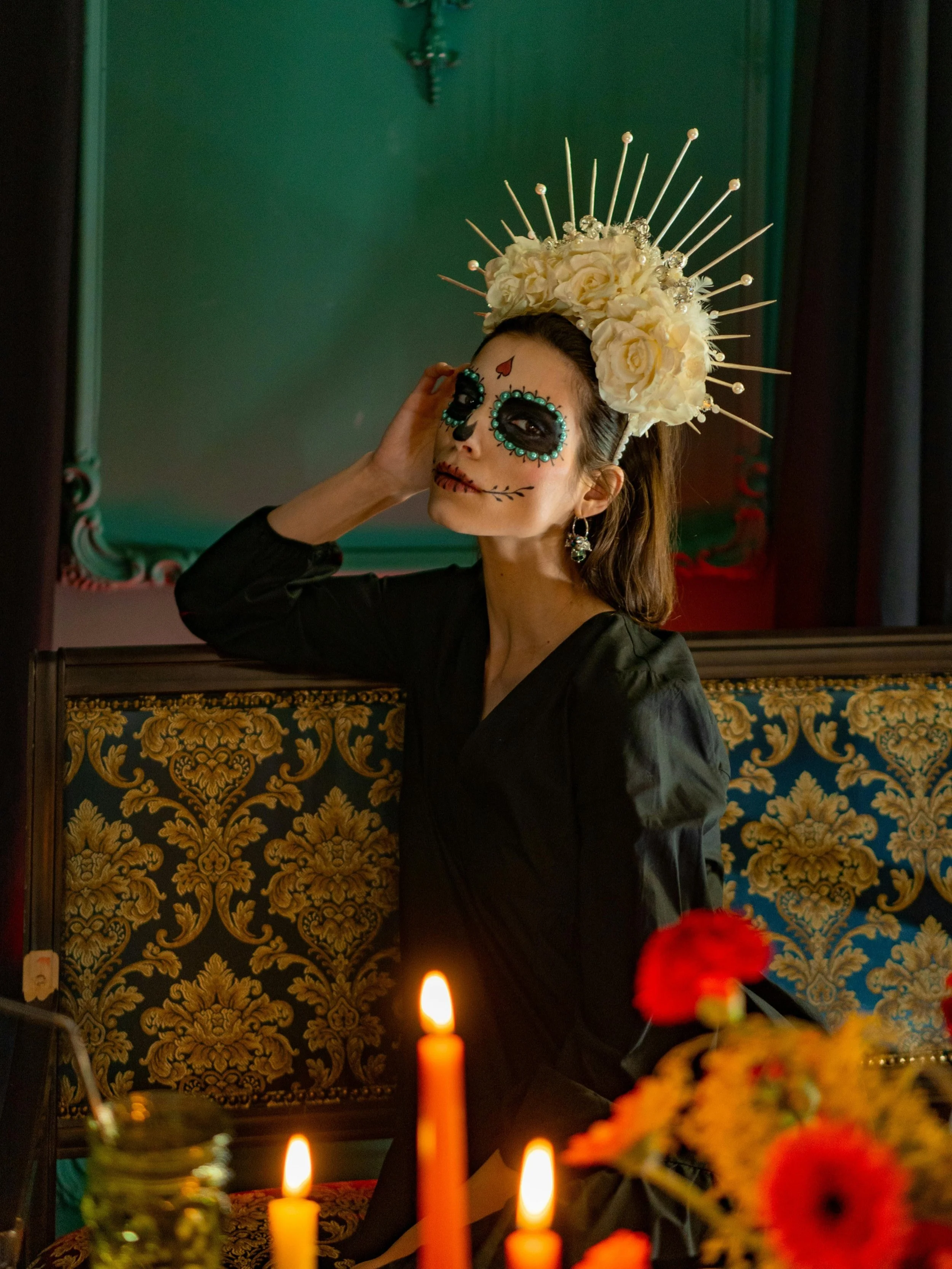Samhain and Día de los Muertos: A Sacred Dialogue with Life, Death, and Transformation
At the heart of existence lies a paradox: nothing lasts forever, yet nothing truly ends. Life flows through cycles—birth, death, and rebirth—inviting us to embrace change as both a natural and sacred process. Two ancient traditions—Samhain from the Celtic world and Día de los Muertos from Mexico—offer profound ways to reflect on this truth. Both teach us that death is not an absence, but a presence woven into life, a doorway to transformation rather than an end.
In Baja California Sur, where the desert blooms against the odds and the ocean constantly shifts, these festivals feel especially poignant. They remind us to slow down, connect with the rhythms of the earth, and find meaning in both the light and the shadows. Let’s dive deep into these traditions to explore what they reveal about our relationship with life, death, and renewal.
Samhain: Entering the Void with Trust
Samhain (pronounced "sow-in") marks the moment when the veil between worlds is thinnest, inviting us to step into the unknown. In Celtic tradition, this liminal space at the end of October signals the death of the old year and the beginning of a new one—a time to pause, reflect, and surrender to the darker half of the year.
But Samhain is not just a time to honor the dead; it’s a chance to embrace the void within ourselves. In the same way the earth withdraws into dormancy, we too are called to turn inward, facing the aspects of life we usually push aside: grief, uncertainty, and the things we have lost. Through rituals of fire and divination, we release what has served its purpose and invite new dreams to take shape, trusting that the darkness will nurture them until the light returns.
In Baja’s stark desert landscape, this lesson is clear. After a long dry season, the land rests in stillness, waiting for renewal. Just as the desert blooms after rain, so too do we bloom when we honor our need to rest, reflect, and release.
Día de los Muertos: Celebrating Continuity and Presence
Where Samhain invites introspection, Día de los Muertos brings joy and connection. In Mexico, death is not feared—it is welcomed as an integral part of life’s cycle. During Día de los Muertos, families create ofrendas (altars) adorned with marigolds, candles, sugar skulls, photographs, and food offerings. These altars invite the spirits of loved ones to return, bridging the worlds of the living and the dead for a brief moment of celebration.
Marigolds, known as the “flower of the dead,” guide spirits home with their vibrant color and fragrance. Sugar skulls remind us that death is sweet, not sorrowful—a playful reminder to savor life, knowing that we will one day return to the earth.
This practice reflects the wisdom that our ancestors are always with us, shaping our lives with their stories, guidance, and love. Just as the ocean touches the shore again and again, their presence remains—sometimes hidden, sometimes clear, but always there.
When we look at the symbolism in both traditions, a unifying archetype of the Divine Feminine emerges—a figure that guides us through death and rebirth. In Egyptian mythology, Isis resurrects her beloved Osiris, showing that death is merely part of a larger process of transformation. Similarly, La Catrina, with her elegant skeletal grin, reminds us that death is no enemy—it is a companion on life’s journey.
Both Isis and La Catrina embody acceptance, beauty, and grace in the face of change. They teach us to confront what we fear and see that within death lies renewal. The desert, too, reflects this wisdom: the cycles of dry seasons and blooms are a dance between death and life, both essential and inseparable.
Honoring the Season: Rituals for Reflection and Renewal
By blending the wisdom of Samhain and Día de los Muertos, we can create sacred practices that align with the rhythms of both nature and spirit. Here are ways to honor this season:
1. Create a Ritual Altar for Reflection and Memory
Set up an altar that bridges both traditions. Include marigolds, apples, candles, and personal objects that represent what you wish to honor and release. Place a photograph of an ancestor or a symbolic item to connect with their presence. Spend time each day at the altar, lighting a candle and offering gratitude.
2. Perform a Fire Ceremony to Release and Renew
Samhain’s fire rituals represent purification and transformation. Write down what you want to release—whether an old habit, a limiting belief, or unresolved grief. Light a fire or candle safely and burn the paper, allowing the flames to transform what you no longer need.
3. Engage with Nature as a Guide
Take a silent walk through the desert or along the ocean, observing the subtle shifts in the landscape. As you walk, ask yourself: What am I holding onto that no longer serves me? What am I ready to invite in? Let nature guide your answers.
4. Celebrate with Food and Drink in Honor of the Dead
Prepare a meal that includes seasonal foods—like apples, pumpkin soup, or pan de muerto—and set a place at the table for an ancestor or loved one who has passed. Eat mindfully, savoring each bite, and reflect on what they may have taught you in life.
5. Use Divination to Set Intentions for the New Season
With the veil thin, this is an ideal time to explore your intuition. Try tarot, scrying with water or a mirror, or journaling your dreams—trusting that the insights you receive will help guide you through the darker months.
Aligning with the Rhythms of the Earth and Spirit
Both Samhain and Día de los Muertos remind us that life is a dance between light and dark, beginnings and endings, joy and grief. Just as the desert waits patiently for rain, we too must embrace moments of stillness and trust that new growth will come when the time is right.
In Baja California Sur, where land, sea, and sky meet, the lessons of these festivals feel especially relevant. The earth speaks through every cycle—urging us to let go, reflect, and prepare for renewal. Whether we light candles for ancestors, walk silently through nature, or set intentions for the months ahead, these practices invite us to live with greater intention, gratitude, and trust in the cycles of life.
The Invitation: Trust the Cycles, Honor the Journey
These celebrations show us that what seems like an ending is simply the beginning of something new. When we align with the rhythms of nature, we find that everything—birth, death, joy, sorrow—has its place. This season, let the wisdom of both traditions guide you. Honor your past, celebrate your present, and trust that renewal is always just beyond the horizon.
The earth’s rhythm is our rhythm. What will you release this season? And what new seeds will you plant in the quiet of winter, waiting to bloom with the return of the sun?
Mindfully,
Sam.
@mindfullysam



